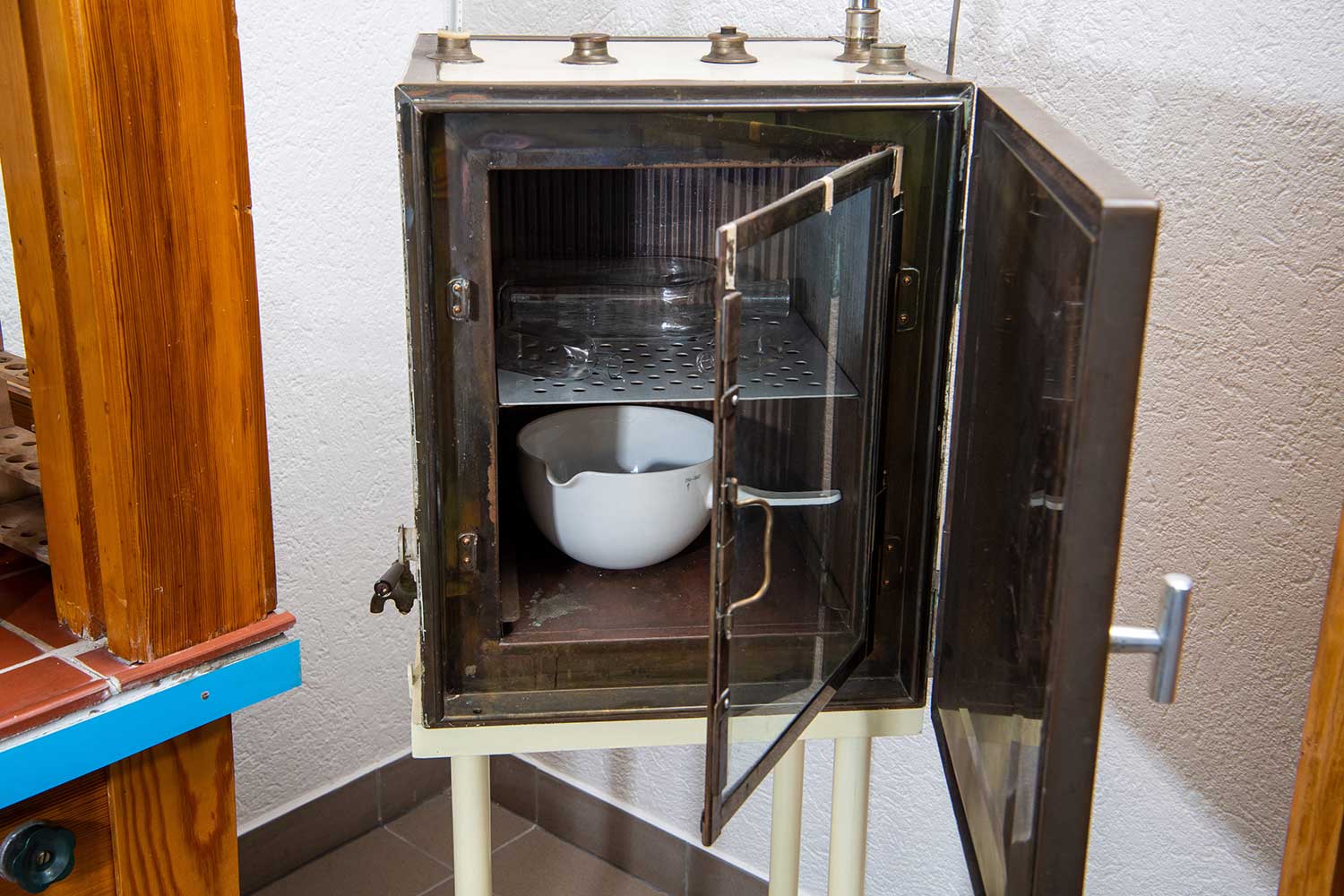2Incubator
around 1940

The development and growth of organisms usually require special conditions. Incubators are used to create and maintain microclimates by closely controlling conditions such as humidity and temperature. Originally, these devices were developed to hatch chicken eggs. One of the pioneers who introduced these devices into microbiological laboratory practice was Robert Koch.
The most important element of the devices were thermostats. Closed glass containers filled with mercury were used to regulate the temperature. Two wires were melted into the glass wall of these contact thermometers at fixed points and acted as switches for the upper and lower limits of temperature. When the temperature rose, the mercury reached one or both wires. That activated or deactivated a heating element, which kept the temperature of water in the incubator‘s copper jacket constant, within a specified range.
In addition to chicken eggs, the incubators could also be used to hatch insect eggs. The geneticist Timoféeff-Ressovsky and others used incubators like this one to grow fly eggs and larvae under controlled conditions. The comparatively simple technique of thermoregulation can therefore be seen as a crucial method on the path to modern genetics and molecular medicine.
Incubators are also used in modern laboratories. Nowadays they are digitally controlled, but in principle they do not differ significantly from the devices seen here. They are still used to hatch eggs, and to grow cells as well. They are indispensable tools for modern biology.